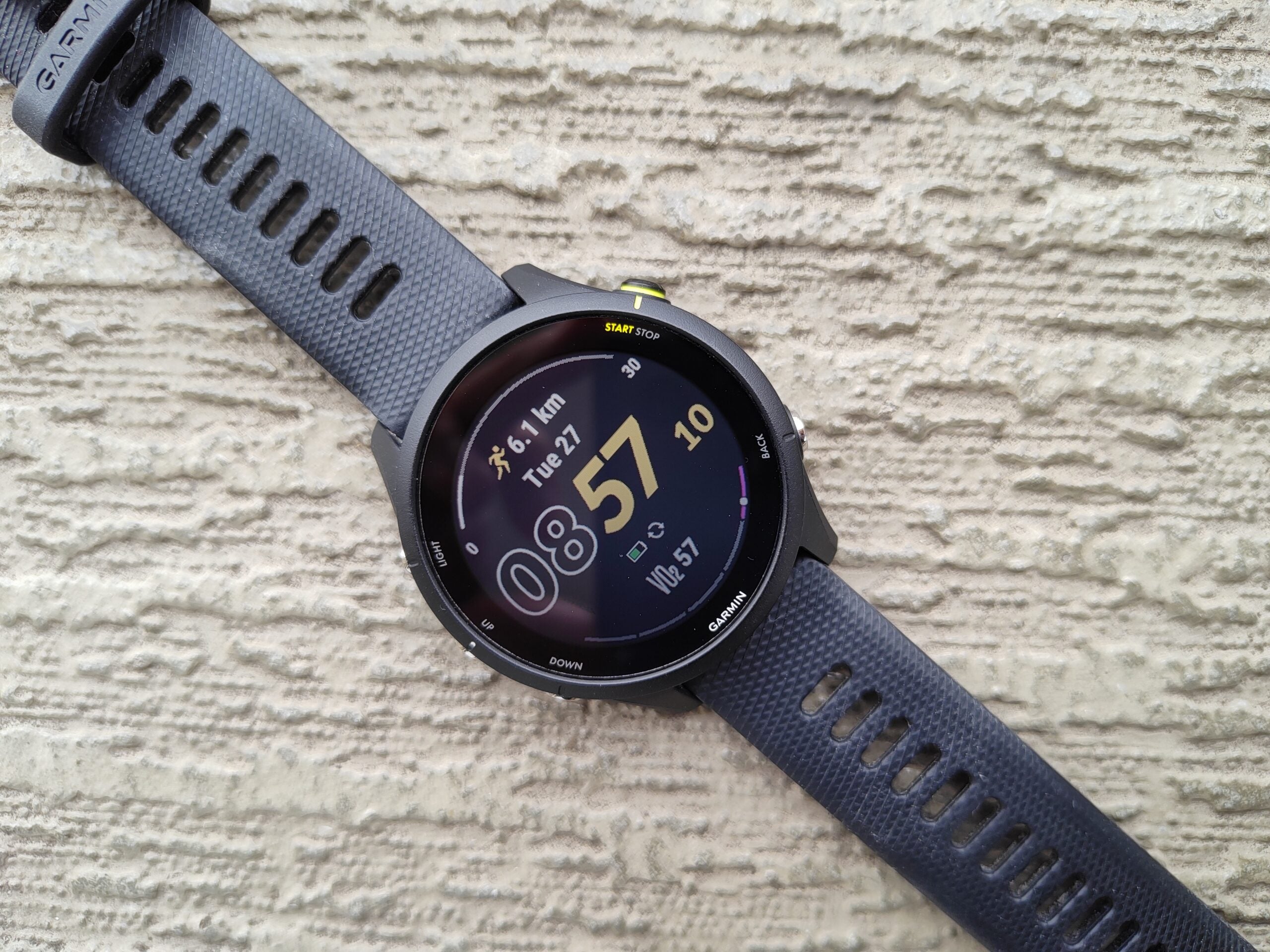Verdict
An excellent sports watch, which is reliable and full of the fitness features you most need. However it’s just for fitness fanatics, and won’t fit the bill if you want an all-round smartwatch.
Pros
- Reliable fitness tracking
- Accurate health metrics
- Practical, lightweight design
- Good battery life
Cons
- Few smart features
- Unspectacular screen
Availability
- UKRRP: £299.99
- USARRP: $349.99
- EuropeRRP: €349.99
- CanadaRRP: CA$459.99
- AustraliaRRP: AU$629.99
-
Long battery lifeGarmin claims you’ll get 14 days of battery life in smartwatch mode, and 30 hours in GPS mode -
Lightweight designThe watch only weighs 49g -
Robust constructionIt’s rated to withstand 5ATM of water pressure, and the screen is made of Gorilla Glass 3
Introduction
Garmin’s running watches have gained a cult-like following among outdoorsy athletes, and it’s not hard to see why. With a laser-like focus on fitness and distance tracking, over the bells and whistles of smartwatches, previous models in the Forerunner series have been reliable companions, especially for the triathlon disciplines.
Having used the Garmin Forerunner 245 for a number of years, I was curious to see if the new model really is one of the best running watches around, or whether you might as well hold onto your cash and wait for the next one.
Design and Screen
- Sporty, lightweight design
- Unexceptional display quality
The Garmin Forerunner 255 is available in two separate case sizes, one measuring 41mm and the other measuring 44mm. Supplied with a plastic strap and available in a range of different colours, it still very much looks like what it is, which is a sports tracking watch; you’re unlikely to wear this when you’re going out, but that’s when you’re least likely to need it.
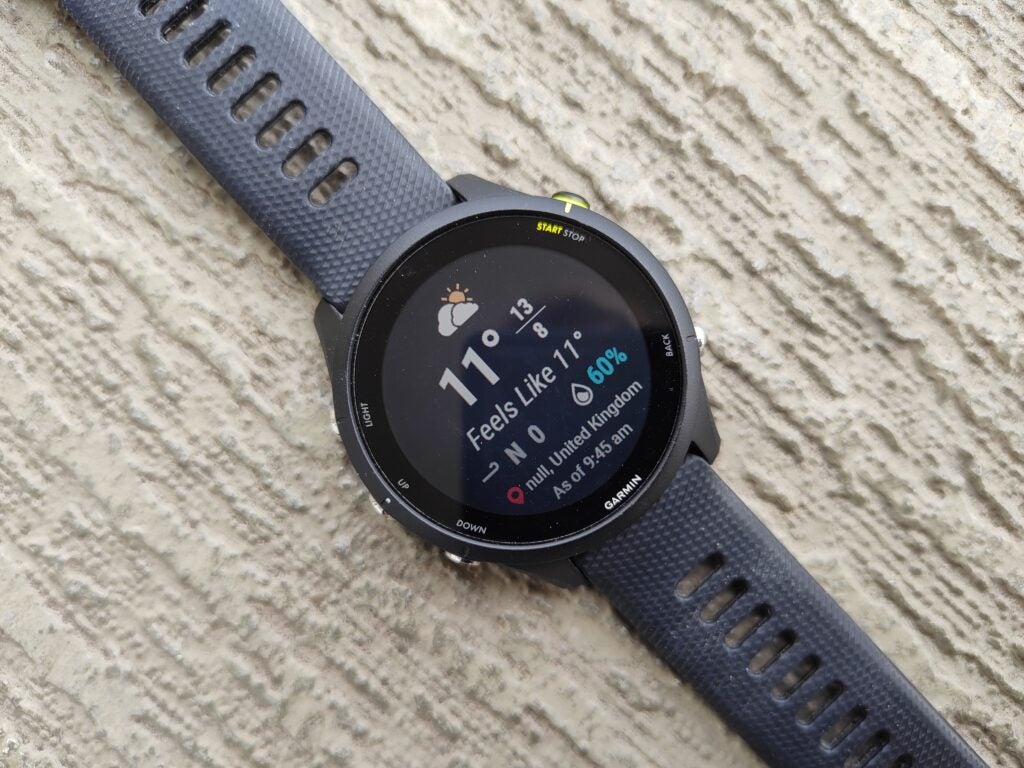
One noteworthy aspect of the design is the addition of bright yellow highlights; there’s one line which runs around the casing, another on one of the crowns, and a small line that points to the Start button. These aren’t ever so attention. While this piping does add a somewhat “louder” aspect to the watch it’s not ever so distracting, with the timepiece mostly seeming unremarkable, at least in black.
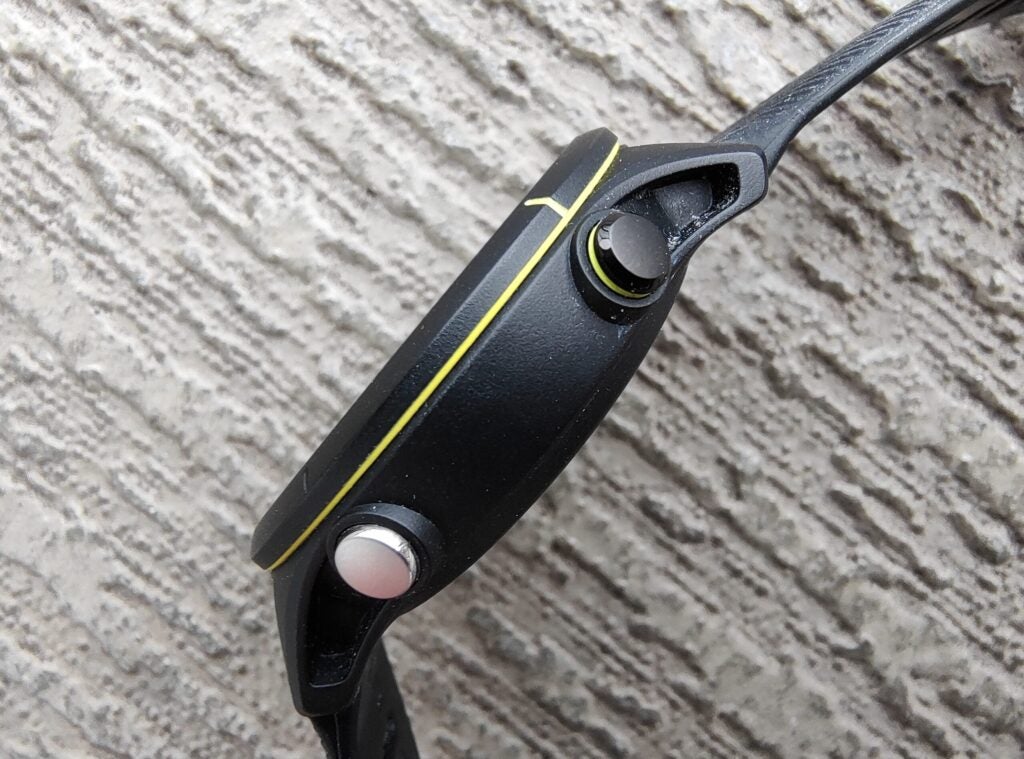
While the watch is made of plastic, and feels it, this material is lightweight (at just 49g) and evidently does the job as far as robustness is concerned, with it resistant to water up to 5ATM.
While some watches feel clunky and distracting to wear on the wrist, I found that this one fit me snugly and never was a distraction, which is exactly what you want when you’re out running. The watch face is not particularly large either, and so as someone with skinny wrists I also felt that it didn’t look out of proportion.
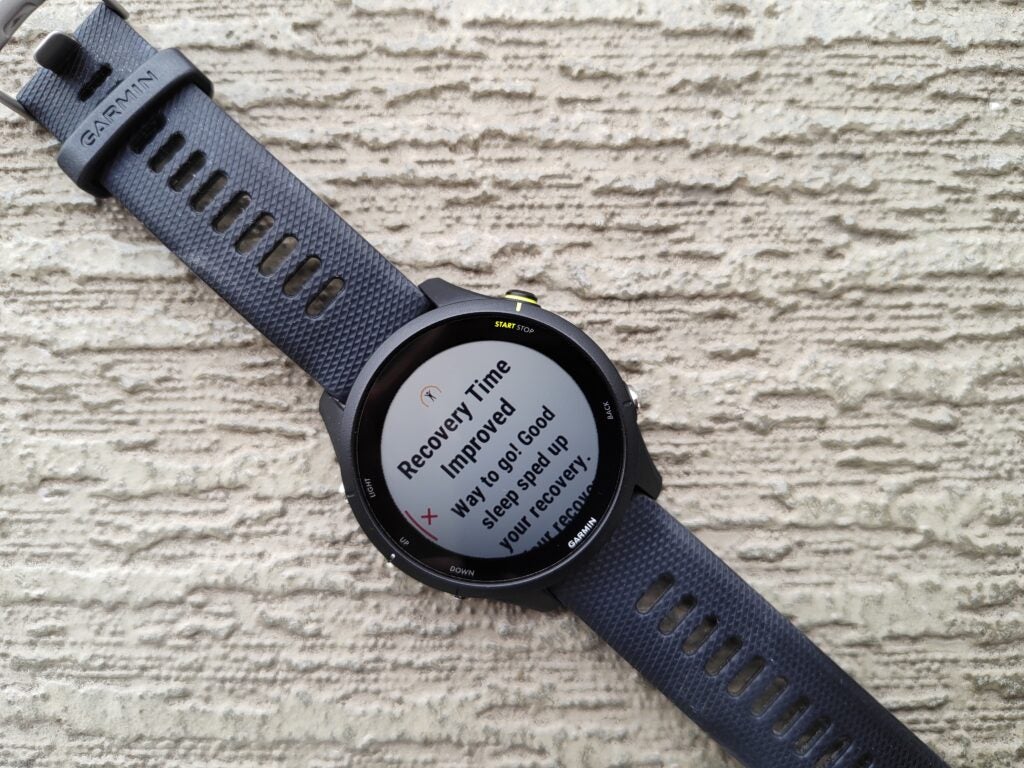
The screen again does its job without being particularly flashy; it’s not got the pin-sharp resolution or the bursting colour of the Huawei Watch GT Runner for instance, but it does what it needs to do. Given that this is a pure sports watch rather than a genuine smartwatch, all you need is to be able to see the display clearly and ideally have it always on, and it does achieve those two tasks but admittedly it’s not a joy to use, and the brightness in particular could be better.
It’s not touchscreen either, with all input being from the five buttons around the sides. However, I see that a strength rather than a weakness, because it means you can always register input regardless of the weather conditions or the sweat on your hands, and so that’s of particular practicality if you do a lot of outdoorsy activities.
As far as the design is concerned, you’re unlikely to fall in love with this watch from its utilitarian looks, but it does serve its purpose well, being comfy and discrete, with a clear if unspectacular screen, and it seems relatively robust too.
Tracking and Features
- Great fitness and distance tracking
- Offers helpful health insights
- Few smart features
The Forerunner 255 has plenty of excellent fitness features so that you can keep on track of your exercise, and of your fitness as well. I took it for a few running sessions, and I was very impressed by how well it held up.
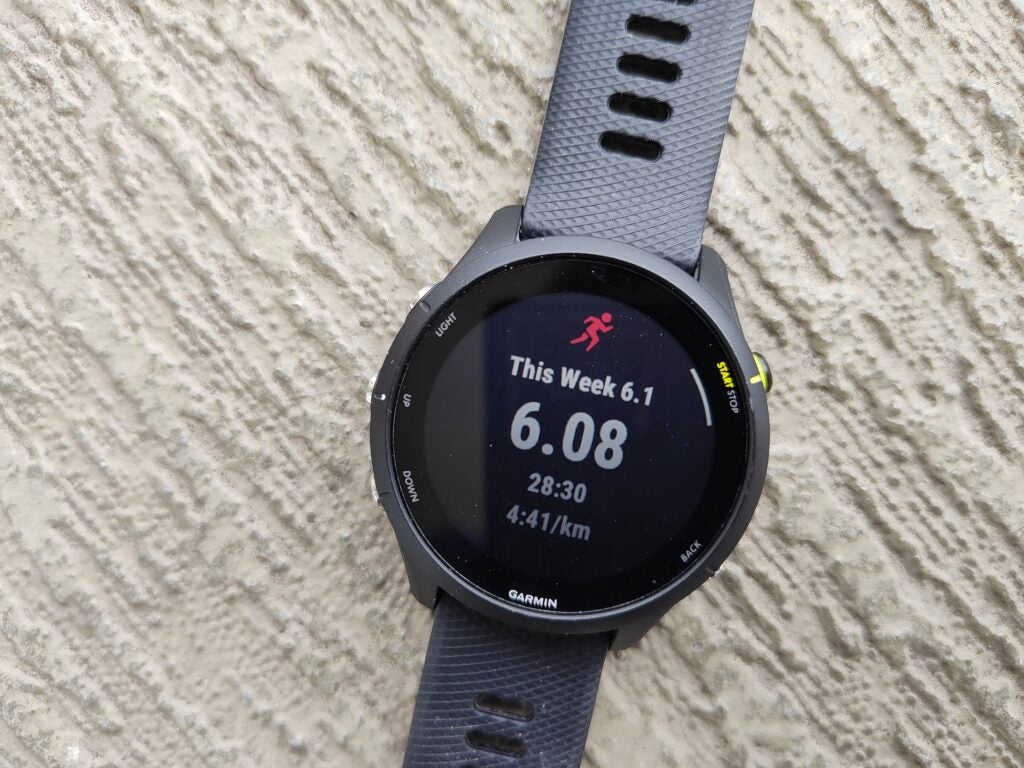
I particularly noticed that the GPS tracking tended to be more reliable than that of the Forerunner 245; for one thing, it connected much more quickly when starting a run (generally within just a few seconds, which was highly convenient) and for another, I found that it was less prone to the odd blip of inaccuracy that I occasionally experienced from its predecessor.
However, when in more dense urban areas, with buildings of around five storeys or more on all sides, then I did find the tracking was less reliable, though you can’t really expect any different.
Once your exercise is over, there’s a wealth of information to pore over on the Garmin Connect app on your phone, and also plenty that’s accessible on the watch itself if that’s more convenient.
Split times, pace, calories burned, elevation, and heart rate are all here, as you’d expect, but you can also learn the anaerobic and aerobic benefits of your exercise, the heart rate zones you’ve been exercising in, your stride length and cadence when running, and more. This watch helps you get a very full and textured picture of how well you’ve been working out.
The 24/7 heart rate tracking was also very accurate, generally concurring closely with the results I got from a chest strap monitor. This statistic evidently feeds into other health stats that are on the watch, and these are plentiful for keeping an eye on your fitness; it can give an SpO2 reading, estimates your VO2 Max after each run, monitors your sleep through the night, flags if your heart rate is unusual, and follows your stress levels through the day as well.
All taken together, you can quickly build up an accurate picture of your day-to-day health thanks to this device, which encourages you to wear it regularly rather than just for running.
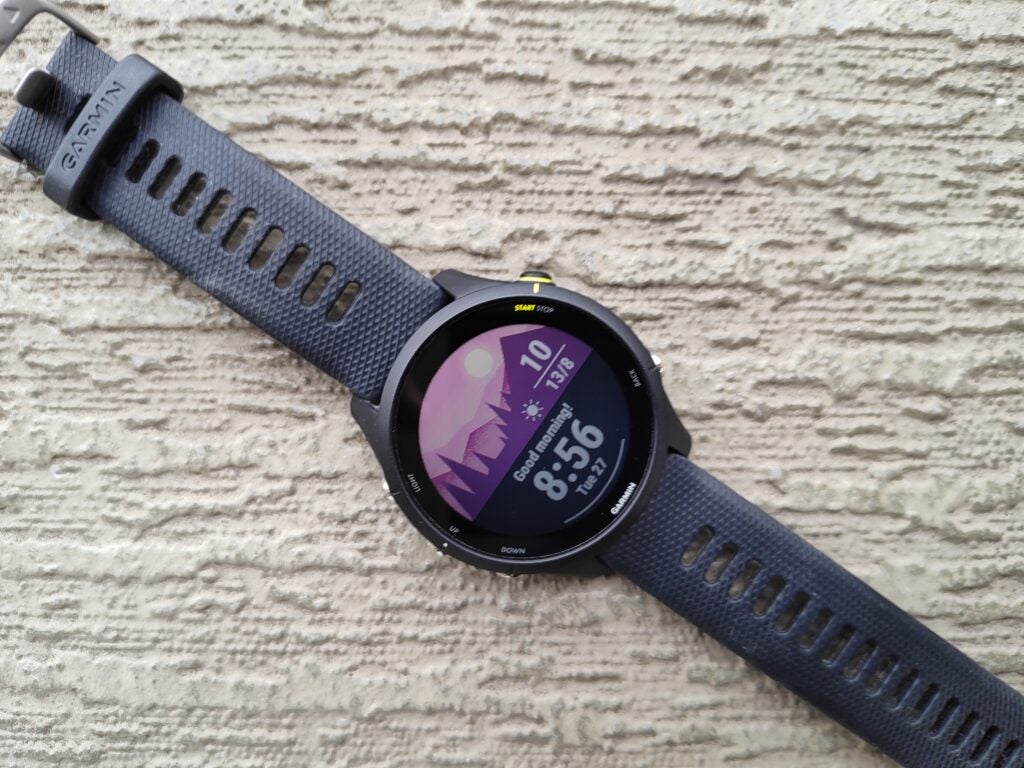
I particularly found that sleep tracking was a useful and accurate metric, and appreciated being able to keep tabs on how well I had rested. What’s more, when you wake up you’ll be greeted by a new feature named Morning Report which not only tells you how well you’ve slept but also lets you know your recovery time from your last training session, your training condition, the weather, and any upcoming events in your calendar if you’ve chosen to synchronise it.
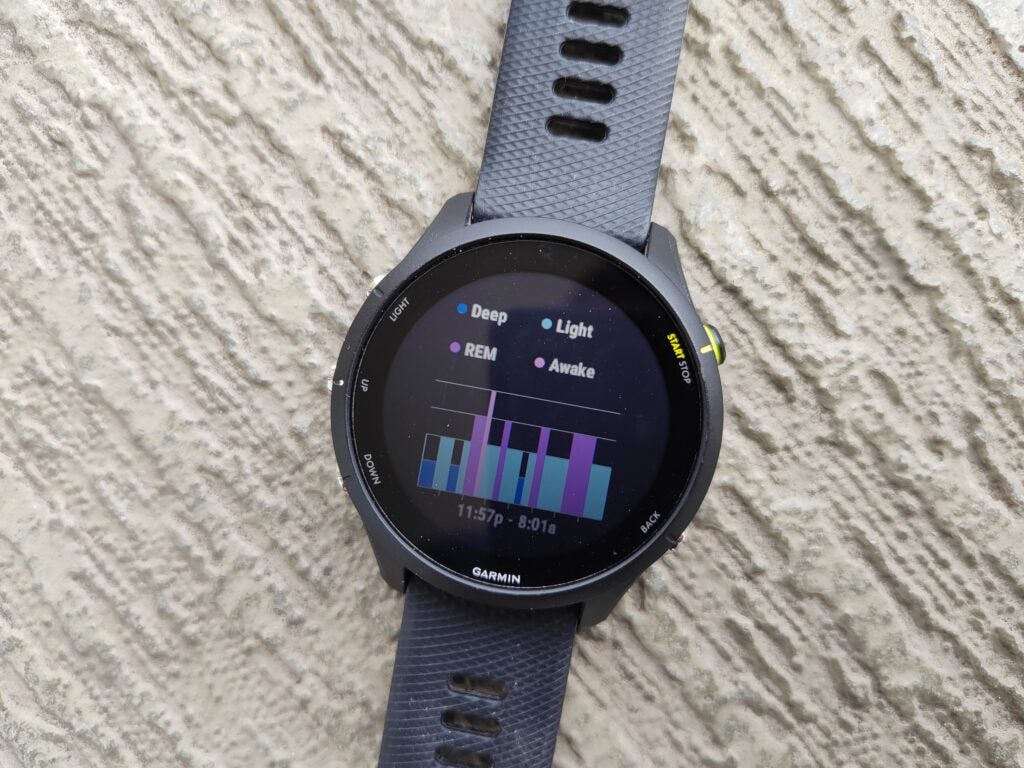
However, it has to be said that this watch does not offers oodles of “smart features”; whereas some smartwatches can function more or less like a second mini-smartphone on your wrist, this one is firmly not in that camp. While it comes loaded with health insights, you can customise the watch face, and you can pull through some notifications such as calls and texts, you don’t have access to a huge and varied app store as you do with the likes of the Apple Watch Series 7 or even the Samsung Galaxy Watch 5, so if that’s the kind of companion you’re looking for then you should steer clear of this Garmin.
However, if fitness is your focus, and particularly if you’re a keen runner, then this watch offers a brilliant array of reliable features to keep on top of your performance, without being as expensive as some of the other wearables in Garmin’s product line.
Battery Life
- Long battery life
- Charges quickly
Battery life is another key benefit of this wearable, which will make it particularly useful for ultra runners, or anyone who simply doesn’t fancy charging their watch on a regular basis (which I’d estimate is pretty much all of us.)
Garmin quotes the Forerunner 255 as having a battery life of 14 days in smartwatch mode, 30 hours in GPS-only GNSS mode, and 25 hours in all-systems GNSS mode, while it will last 16 hours with all-systems GNSS mode on, in addition to multi-band. Taking the example of a 5km run, I only lost 4% of the battery life once completed.
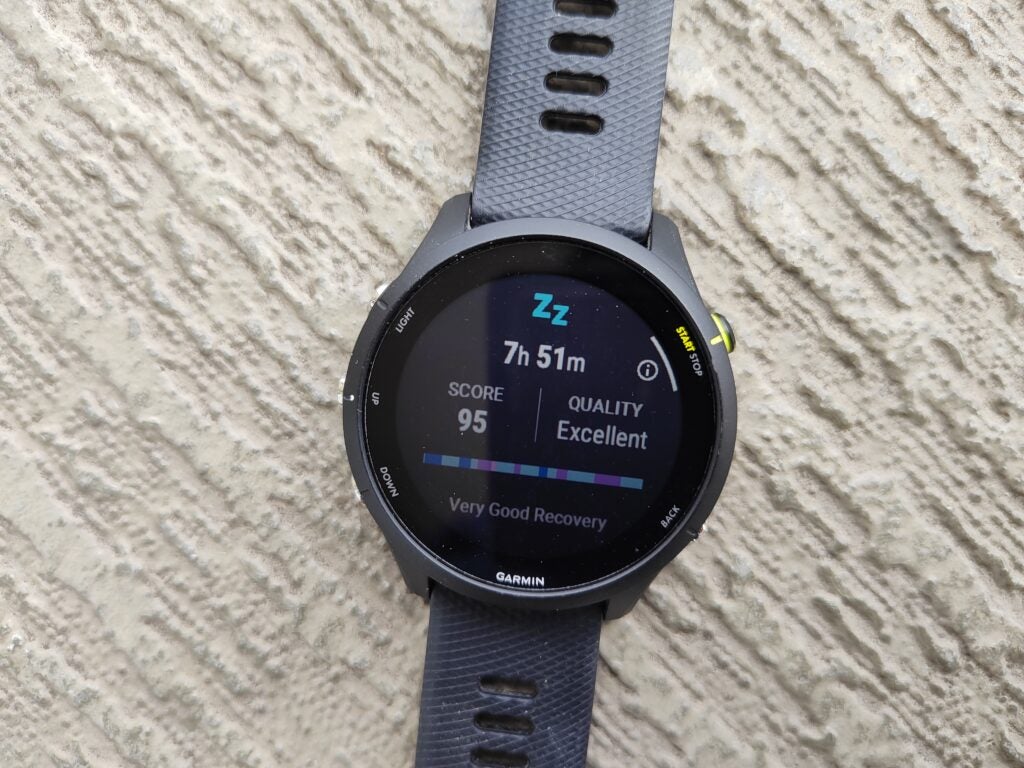
I found that battery life generally did last a long time, and it never preyed on my mind. I went for days and days at a time without charging, despite averaging 3 long-distance runs per week, on top of wearing it on a daily and nightly basis too.
When charging back up again, the device regains 50% charge in under half an hour, so even if you discover the wearable’s low battery before setting out on a 10k run, it’s still perfectly possible to give the watch fifteen minutes or so and have more than enough battery life to play with.
Its long-lasting battery and relatively quick charging were strengths of this device, allowing you to focus on your fitness without having that nagging feeling in the back of your mind that you’d need to plug it in again soon.
Latest deals
Should you buy it?
A reliable and accurate sports watch that’s ideal for tracking your activities and measuring progress
If you’re hoping for an all-round smartwatch or, conversely, a cheaper activity tracker, then this might not be right for you
Final Thoughts
The Garmin Forerunner 255 is a very strong sports watch, which offers all the tracking information you’re likely to need to keep on top of your health and fitness.
Serious athletes aside, few people will need a watch more feature-packed than this if they want to keep tabs on their exercise, across a range of activities including the triathlon disciplines, and also their health, from the heartbeat to sleep tracking.
All these features are offered at a reasonable price; though if you want a watch that packs in plenty of smart features as well, then you’re likely to be disappoitned, as the Forerunner 255 is quite limited in this regard.
How we test
We thoroughly test every fitness tracker we review. We use industry standard testing to compare features properly and we use the watch as our main device over the review period. We’ll always tell you what we find and we never, ever, accept money to review a product.
Worn as our main tracker during the testing period
Heart rate data compared against dedicated heart rate devices
Side-by-side GPS comparison with competing devices
FAQs
Yes, it is water resistant up to 5ATM
Trusted Reviews test data
Sustainability
Trusted Reviews holds the fact that global warming is not a myth as a core value and will continuously endeavor to help protect our planet from harm in its business practices.
As part of this mission, whenever we review a product we send the company a series of questions to help us gauge and make transparent the impact the device has on the environment.
You can see a detailed breakdown of the questions we ask and why in our sustainability info page. In lieu of answering each of these questions, Vivo has provided us with its company Sustainability Report.
Jargon buster
ATM
The unit of measurement for atmospheric pressure, used in the context of understanding how far a device can be submerged into a body of water. For reference, 1ATM is equal to roughly 10 metres.
GPS
An abbreviation of the Global Positioning System, which uses satellite communication to pinpoint your location. Some smartwatches are able to achieve this communication without the use of a smartphone.
Belt-drive motor
The platter is turned by a motor connected by an elastic band. The enables a less powerful motor to drive the platter, while the elastic can absorb any mechanical vibrations that could affect playback


















